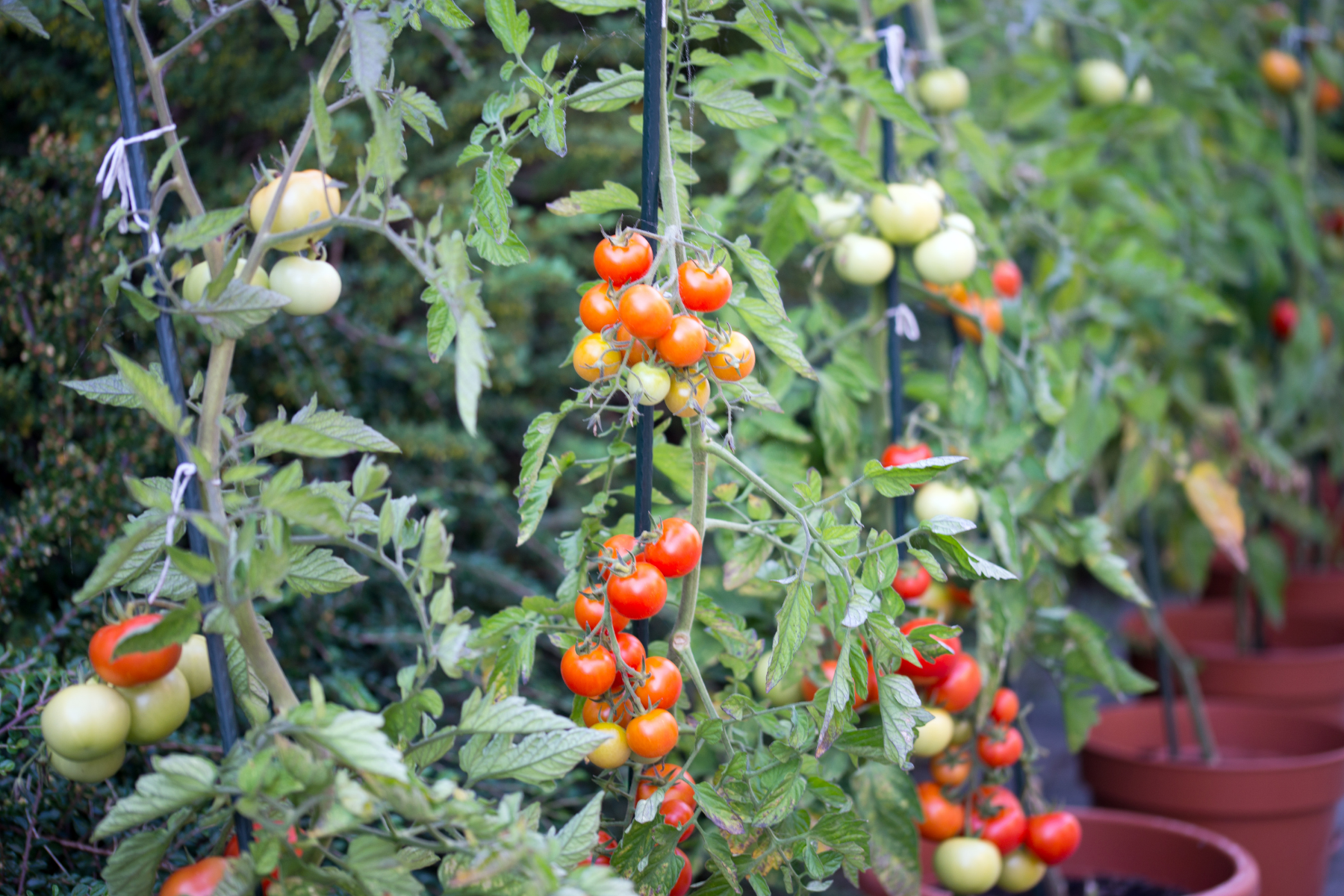Last Updated on April 10, 2024 by Real Men Sow
Fusing one tomato plant’s strong rootstock to another is a grafted tomato plant. The top variety, which is usually selected for its flavor, will have a strong root system that increases the yield.
How Are Tomato Plants Grafted?
You can use two plants to graft tomato plants: a delicious fruiting variety and a super strong rootstock. Remove the super-strong rootstock and the tops of each fruiting variety using hands, carefully and skillfully. Use a very sharp knife to cut at an angle along each stem. Graft the rootstock bottom to the top of each fruiting plant. A special clip holds the stems together and drops as the plant grows.
The rootstock is cut above the first true leaf (cotyledons) above the ‘seedling’ leaves. The rootstock is grafted above the first true leaves to fool the plant into believing it’s younger than it actually is. To get a greater yield, the tomato plant produces its fruit earlier and lowers down on the stem.
Advantages of Growing Grafted Tomatoes
There are many benefits to growing grafted tomatoes plants, including:
- Minimum 6-8 Trusses per plant
- Extraordinary tomato plants can produce up to 75% more fruit
- A longer and earlier fruiting period is possible
- Higher yield
- Greater resistance to soil-borne diseases and pests
- Non-grafted tomato plants have a better ability to grow outdoors than grafted tomatoes.
Which Variety is the Best?
All grafted tomato plants can produce excellent harvests. These range from the massive ‘Buffalosteak,’ which produces fruits up to 700g each, to the tiny ‘Tutti Frutti’ collection.
For its unusual black tomatoes, ‘Indigo rose’ is a good choice. Alternatively, you can grow ‘Shimmer’ to get variegated flesh and high antioxidant levels.
General Care for Grafted Tomato
Your tomato plant will grow and develop, so it will be necessary to transfer it into a larger container to allow the roots to expand. It’s also possible to plant your tomato plant in a new pot outdoors or in a larger container. Make sure the point where the graft was made is not below the soil/compost. The top variety will root itself if the grafting spot is below the soil. This negates the benefit of growing from a strong rootstock.
When your plant is approximately 40cm (16′”) tall or has its first yellow flowers you can transfer it to a greenhouse, or somewhere sunny outside, such as a container, or in the ground. You should not move your tomato plant outside before all frost risk has passed.
Growing Side Shoots
Small shoots begin to form in the ‘V” space between the main stems and the leaf branches around May/June. Side shoots are also known as side shoots and should be removed (they won’t bear any fruit). This allows the plant to concentrate its energy and nutrients on the fruiting trusses. Simply grab the stems between your thumbs and forefinger and pull them out. Side shooting is not allowed. Leave the Tomato Lizzano shoots because they will become a bushy, bountiful plant that you can use to make a hanging basket.
Training Grafted Tomato Plants
Your tomato plant will grow as it matures. Make sure that each leaf gets enough sunlight and is well supported. Your tomatoes will be richer in healthy minerals if they get more sunlight. Shaded leaves will produce less photosynthesis, which means less energy and smaller fruits. The leaves will remain slightly damp if they don’t get enough sunlight, which makes them more vulnerable to fungal diseases.
When your tomato plant has produced a good crop, you can remove the tip at the top. This redirects all nutrients and energy to the mature fruits. Here, again, tomato ‘Lizzano’ is an exception. This plant is a bush-type and does not require any support, pinching, or pruning. Let it grow!
Removing Leaves
To remove any leaves that are too long or low, trim your tomato plants using secateurs. The first time you remove leaves, keep the lower portion of the plant above the first truss. You can remove more leaves as the plants mature to let the sun reach the fruit.
Adding Support
Give your tomato plant some support once it starts to bloom. There are two options for how to do this. You can either use a 1.5m (5ft) cane to support the plant or tie it with string or twine. Simply place the cane in the soil so that it is as close as possible to the main stem. Wrap a piece of twine around your cane. Cross it over the stem and then tie it off. Do this at regular intervals over the fruiting branches. The best way to train your plants up is to use vertical twine, wrapping the string clockwise around each plant as it grows.
Harvesting
Your fruits will be ready for harvest when they are an even orange-red (or orange, in the case Of Orangino). To ensure that you get as many fruits as possible, make sure to check your plants every few days once they begin to ripen. You can use your thumb and finger for the stem. The green stalk will help prolong the fruit’s life. To get the best flavor, keep your tomatoes at room temperature.

